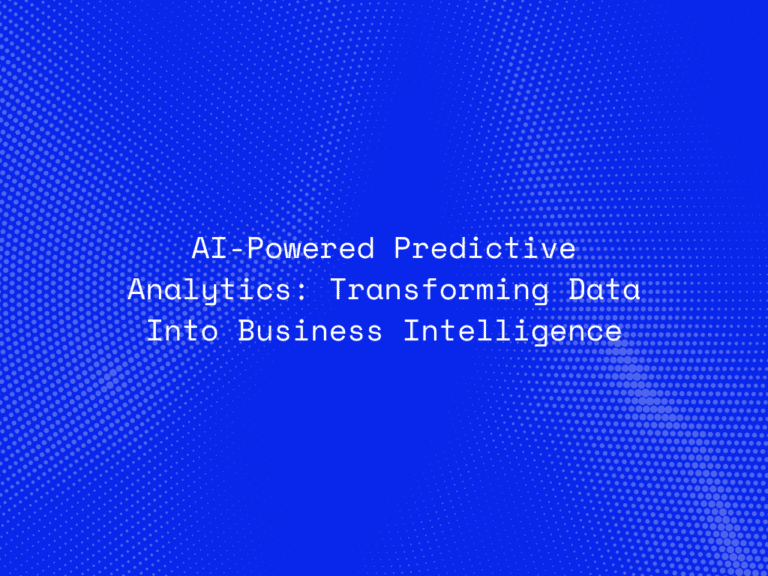The generative AI market is experiencing an unprecedented boom, transforming industries and attracting significant investment. As businesses strive to innovate and enhance efficiency, understanding the key trends and successful applications of generative AI is crucial. In this blog, we will analyze the rapid growth of the generative AI market, highlight investment trends, and explore how different industries are adopting AI solutions to drive innovation and efficiency.
The Rise of Generative AI
Generative AI refers to advanced algorithms capable of creating new content, such as text, images, and music, by learning patterns from existing data. This technology is not only innovative but also versatile, finding applications in various sectors. According to recent market reports, the generative AI market is projected to grow from $8.4 billion in 2022 to $42.6 billion by 2027, at a compound annual growth rate (CAGR) of 38.2%. Factors such as advancements in AI technology, increasing availability of data, and growing demand for personalized and creative solutions are driving this rapid expansion.
Key Investment Trends in Generative AI
Investment in generative AI has surged as investors recognize its transformative potential. Major players like Google, Microsoft, and OpenAI are leading the charge, while numerous startups are also attracting substantial funding. Venture capital and private equity firms are heavily investing in AI technologies, focusing on areas such as natural language processing, computer vision, and machine learning. These investments are fueling research and development, leading to breakthroughs and new applications of generative AI.
One notable trend is the growing interest in AI-driven content creation tools. Companies developing AI systems for generating written content, images, and music are receiving significant funding. This trend reflects the demand for innovative solutions that can enhance productivity and creativity in various industries.
Industry Adoption of Generative AI
Different industries are leveraging generative AI to drive innovation and efficiency. Let’s explore how generative AI is being adopted in retail, manufacturing, and media/entertainment.
Retail In retail, generative AI is revolutionizing personalized shopping experiences. AI algorithms analyze customer data to generate personalized product recommendations, enhancing customer satisfaction and loyalty. Retailers are also using AI to optimize inventory management, reducing costs and improving efficiency. For example, an AI-driven system can predict demand for specific products, helping retailers stock the right items at the right time.
Manufacturing The manufacturing industry is adopting generative AI to optimize design processes and improve efficiency. AI algorithms can generate new product designs based on predefined criteria, reducing the time and cost associated with traditional design methods. Predictive maintenance is another key application, where AI systems analyze data from machinery to predict and prevent potential failures, minimizing downtime and maintenance costs.
Media and Entertainment Generative AI is making a significant impact in media and entertainment by enhancing content creation and audience engagement. AI-driven tools can generate scripts, compose music, and create visual effects, streamlining the production process. Additionally, AI algorithms analyze audience data to provide insights into viewer preferences, enabling content creators to tailor their offerings to audience demands.
Successful Case Studies
Retail: A leading e-commerce company has implemented generative AI to personalize marketing campaigns. By analyzing customer data, the AI system generates tailored email campaigns, resulting in higher engagement and conversion rates. This personalized approach has significantly boosted the company’s sales and customer retention.
Manufacturing: A prominent automotive manufacturer uses generative AI to improve product design and efficiency. The AI system generates multiple design prototypes based on specified criteria, allowing engineers to select the best design. This approach has reduced the design cycle time and improved the overall quality of the final product.
Media and Entertainment: A major streaming service leverages generative AI to enhance content production. The AI system analyzes viewer data to identify popular genres and themes, guiding the creation of new shows and movies. This data-driven approach has helped the company produce content that resonates with its audience, leading to increased viewership and subscription rates.
Challenges and Future Prospects
Despite the promising potential of generative AI, several challenges must be addressed. Ethical concerns, such as bias in AI algorithms and data privacy issues, need careful consideration. Technical limitations, including the quality of generated content and the interpretability of AI models, also pose challenges.
Looking ahead, continuous innovation and investment will be crucial in overcoming these challenges and driving the future growth of generative AI. As technology advances, we can expect even more sophisticated and versatile applications of generative AI across various industries.
Conclusion
The generative AI market is booming, driven by significant investments and widespread industry adoption. This transformative technology offers immense potential for innovation and efficiency, as demonstrated by successful case studies in retail, manufacturing, and media/entertainment. As we navigate the future of generative AI, addressing challenges and investing in continuous improvement will be key to unlocking its full potential.
We invite you to share your insights and experiences with generative AI in the comments below. Businesses interested in exploring AI solutions can reach out for more resources and support. Let’s continue the conversation and embrace the future of generative AI together.




